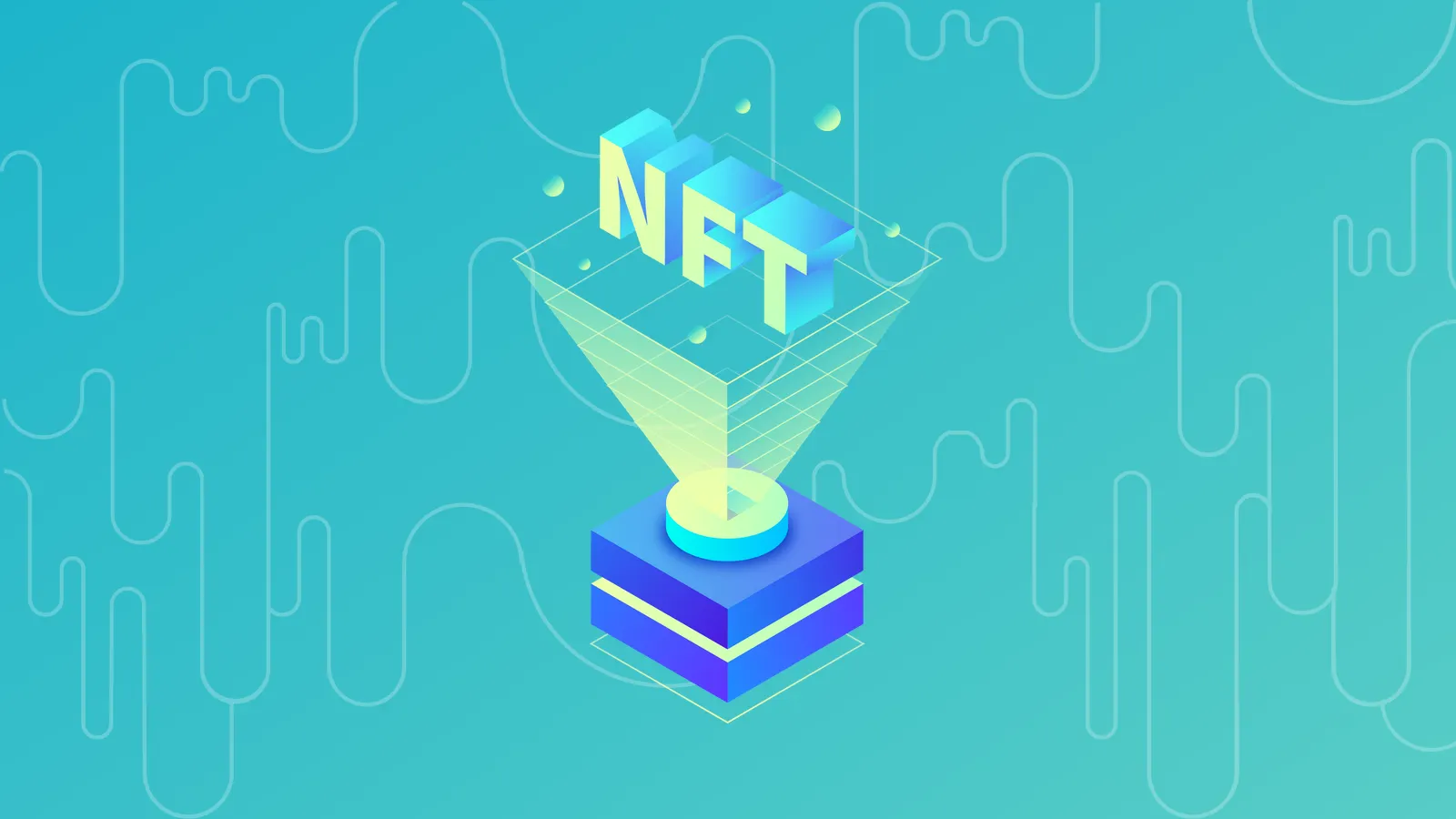NFTs, or non-fungible tokens, are blockchain-based tokens that prove ownership and provenance of digital items such as images, video files and even physical assets.
They’ve shot to prominence in the last year, with multi-million dollar sales of NFT artwork grabbing headlines, while Twitter has been overrun by NFT avatars like Bored Ape Yacht Club, CryptoPunks and Pudgy Penguins. Even big brands and celebrities have jumped on the NFT bandwagon—but how do you go about creating a non-fungible token?
Minting an NFT—the fancy term for “creating on the blockchain”—is a seamless experience, if you follow these beginner-friendly steps.
In this guide, we’ll focus on Ethereum, the most popular blockchain for NFTs, and OpenSea, the most popular NFT marketplace.
Get a crypto exchange account
The first step in minting your NFT—or doing anything in crypto—is getting a crypto exchange account like Coinbase or Kraken. Crypto exchanges are where you can easily buy and sell cryptocurrencies.
You need a crypto exchange account because you need to buy Ethereum to pay for the one-off fee of minting NFTs—we’ll explain that in the next section.
And hey, if your NFT sells, you may want to cash out your earnings, convert to another cryptocurrency, or do other stuff a crypto exchange lets you do.
If you don’t have a cryptocurrency exchange account, here’s a guide to help you make a decision.
Buy Ethereum
Ethereum is the blockchain on which the majority of NFTs are built. Ethereum, or ETH, is also the name of the native currency of that network. So when you sell and buy NFTs, you’re most likely to use Ethereum.
Ethereum is listed on almost all crypto exchanges (it’s the second-largest cryptocurrency after all), so you won’t have trouble buying it.
But why buy Ethereum to sell an NFT?
To buy and sell NFTs, you'll usually use an NFT marketplace, which are like eBay or Amazon for NFTs. By far the biggest one of those is OpenSea, which accounts for 97.8% of all Ethereum NFT trade as of October 2021. That’s the marketplace we’ll cover here.
Signing up for OpenSea costs Ethereum.
You’ll need to pay for what’s called “initialization”—a one-time fee paid in Ethereum to sign up for the platform.
How much Ethereum will you need? Well, the gas price (as the unit of Ethereum transaction fee’s called) fluctuates massively, so there’s no good answer. Depending on the network conditions (how busy it is), it can be as low as $30 or as high as $300.
Get a crypto wallet
NFT marketplaces like OpenSea work with crypto wallets. There are many Ethereum wallets out there. But by far the most popular is MetaMask (which, like an editorially independent Decrypt, is funded by Ethereum incubator ConsenSys).
MetaMask is a browser plugin, and it works best with Google Chrome or Brave. Once it's installed, it lets you store Ethereum and Ethereum-based tokens (including NFTs).
Setting up a crypto wallet may sound daunting, but it’s quick and easy. Download and install MetaMask through their website, and follow the instructions.
Once the little fox logo appears on your browser, click on it. It will take you through a few quick steps. You’ll create a password. Separately, MetaMask will assign you a “Secret Recovery Phrase,” a 12-word phrase that generates your wallet. You'll need to store this somewhere safe, like on a piece of paper in a secure spot, as anyone with the seed phrase will be able to access your wallet and the funds in it.
There’s also an option to buy Ethereum directly on your MetaMask, which we don’t recommend due to commission fees that are higher than exchanges.
Send Ethereum to your crypto wallet
Now that you've bought Ethereum on a crypto exchange and also have your MetaMask up and running, it’s time to load your crypto wallet with some Ethereum.
To send Ethereum from your exchange, go to your exchange’s “send” or “withdraw” page that lets you move funds to a crypto wallet. You will need to enter...
- the amount in Ethereum you want to send
- your Ethereum public address
When you set up MetaMask, it automatically generates an Ethereum public address for you. It’s displayed at the top of your MetaMask pop-up and starts with "0x". Think of your Ethereum address as your bank account number on the blockchain.
Sign up for OpenSea using your crypto wallet
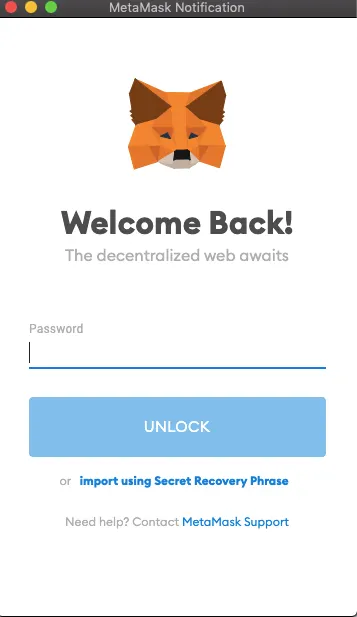
First, click on the little fox logo on your browser and enter your password to unlock MetaMask.
Then go to opensea.io (use the same browser where your MetaMask is installed). Once on the website, click "Profile” on the top-right corner.
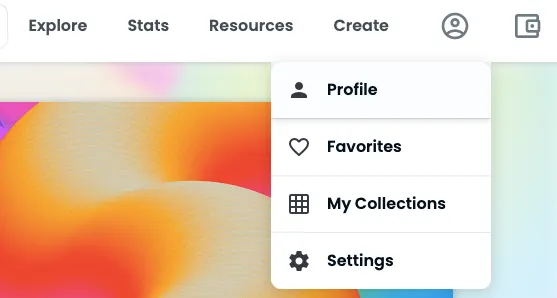
You will be prompted to connect your crypto wallet, so choose your wallet.
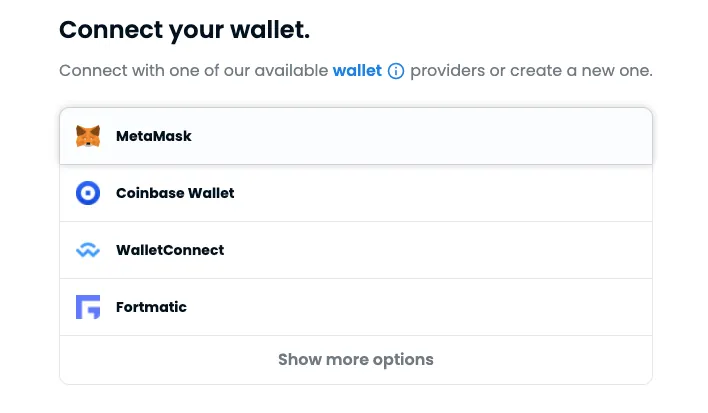
OpenSea will ask you to accept the terms and conditions on your Metamask. It’s a sign that your wallet’s successfully connected with MetaMask! Click “Sign” if it all looks good.
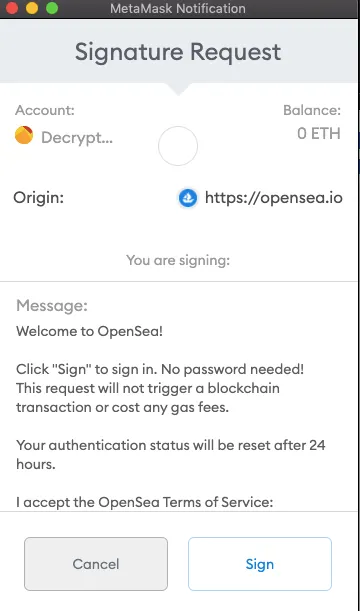
Your “Unnamed” profile is created! You’ll need to enter a username and an email address to verify your account. You can include more details like social media, but none of it is necessary. Your Opensea account’s pretty much good to go.

If you’ve taken care of the verification email, then your profile should be all set! Now it’s time to create your NFT.
Create your NFT

To mint an NFT on OpenSea, click “Create” next to your profile picture (just a green dot in this case!) on the top right corner.
Or if you want to mint multiple NFTs as part of a collection, click “My Collections” under your profile picture.
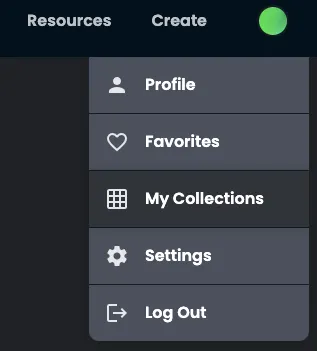
But for the remainder of this article, we’ll only focus on “Create,” which is for one NFT.
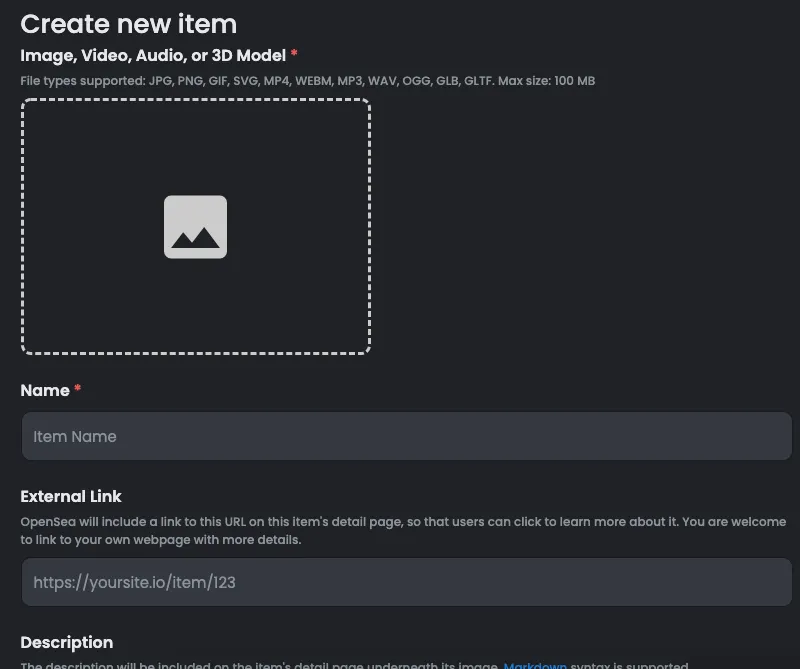
Here’s the page where things get real!
You can upload a supported file from your computer as an NFT. You’ll need to name your NFT, but no other details are necessary. But it’s a good idea to write a brief description.
For your first experiment, you can leave the rest of the options as default. After uploading a file and naming your NFT, just scroll down and click “create.”
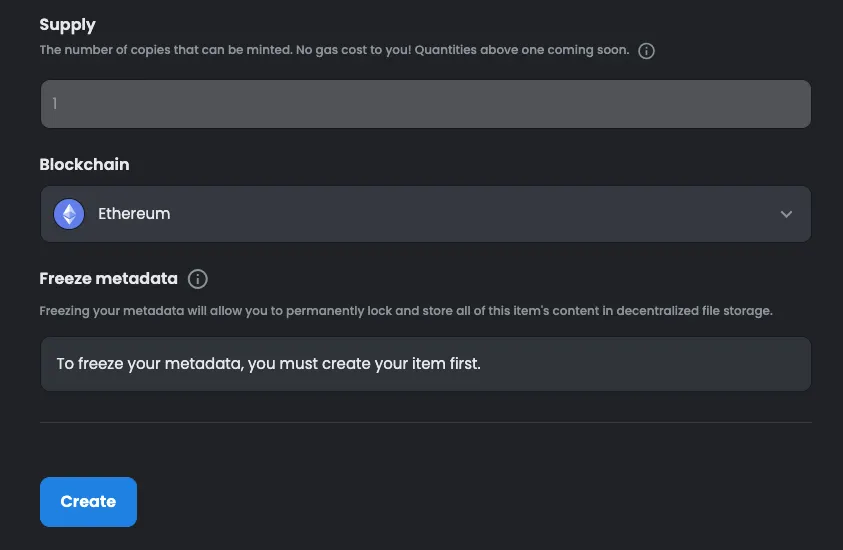
We’ll use a digital image as an example—a photo taken by your reporter in Antalya, Turkey.
And voila. This is how your NFT will appear on OpenSea:
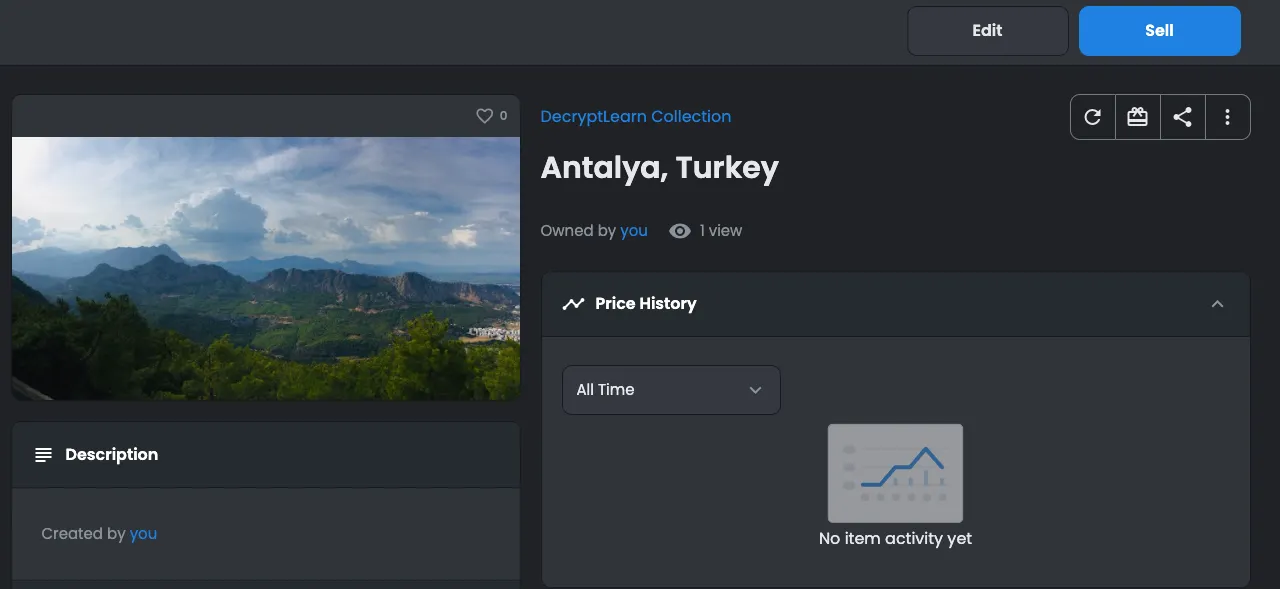
But it’s not listed for sale yet. To list your NFT for sale, click “sell” on the top right, and the following page will appear.
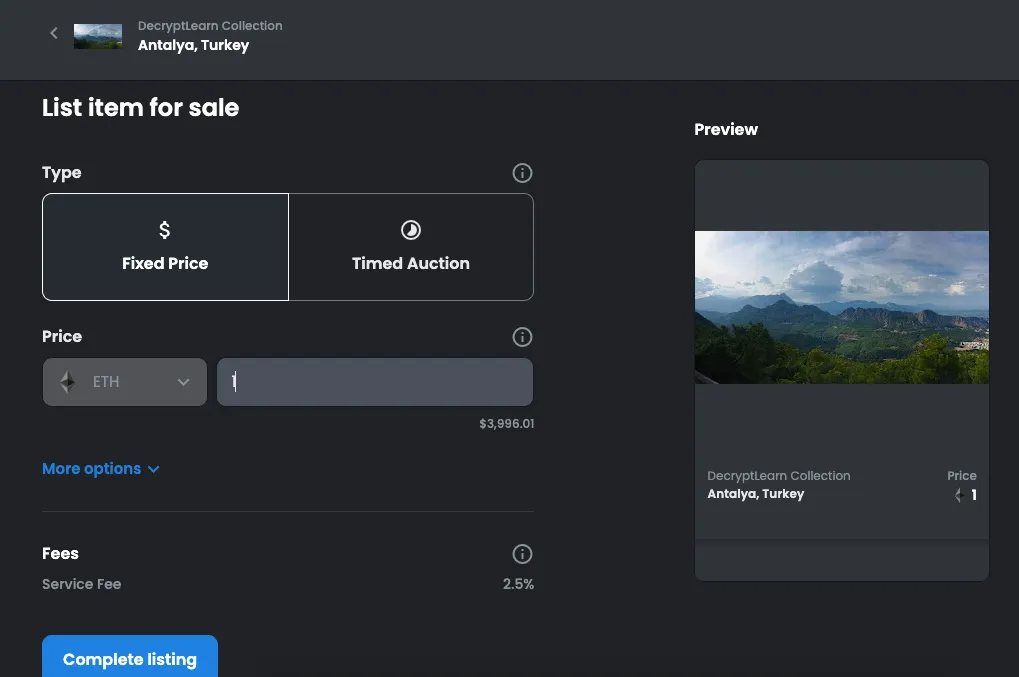
You can sell it for a fixed price or you can put it up for auction. If listing for a fixed price, you won’t pay for the gas fee (remember, any transaction on Ethereum incurs these transaction fees). Instead, the buyer will bear the burden of gas. For auctions, sellers pay the gas. Let’s set an ambitious target of 1 ETH for this photo.
Remember, OpenSea will charge 2.5% in commission fees when your NFT sells.
When you’re ready, click “complete listing.”
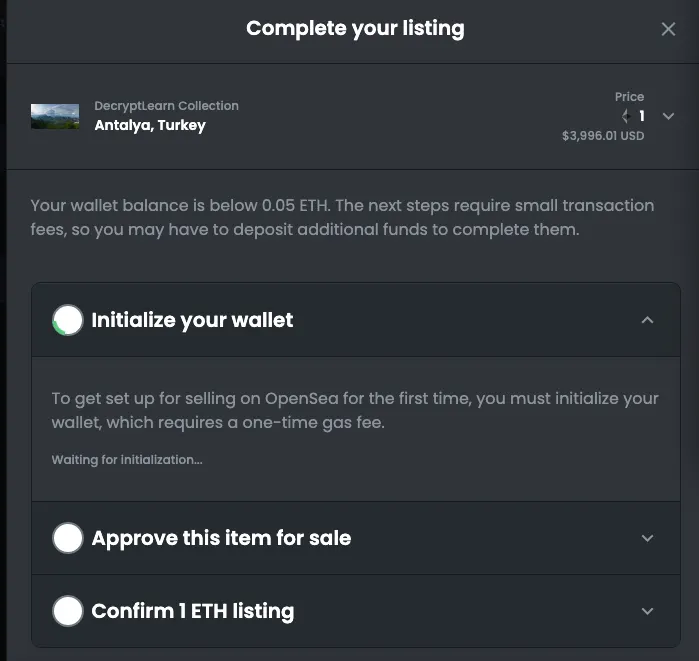
Before it’s listed for sale, OpenSea will ask you to sign a few things through your MetaMask wallet.
Since it’s your first time selling on OpenSea, you’ll need to initialize your wallet. This is where you get to spend that Ethereum you bought and transferred to your wallet!
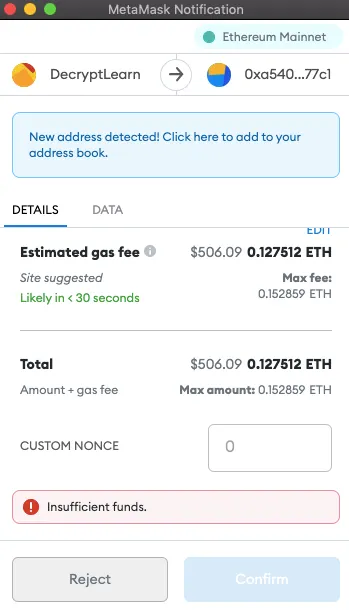
For wallet initialization, MetaMask will calculate a gas fee for you. If there’s not enough money in your wallet, the “confirm” button won’t appear (as is the case here). If there are sufficient funds, then just click “confirm” and you’ll be initialized in a couple of minutes!
OpenSea will also ask you to approve the item for sale, and it will ask you to confirm the price you want to list it for. All you need to do is just sign them off through MetaMask.
And that’s it—congratulations on minting your first NFT!
If you want to understand the buying side of NFTs, take a look at this guide.
Minting on other NFT marketplaces
OpenSea is wildly popular. But there are lots of other NFT marketplaces that differ in the way they handle the technical process, work with artists, attract audiences… or charge fees:
- Rarible charges a 2.5% fee, paid both by the buyer and the seller.
- Nifty Gateway charges 5% plus $0.30 on every secondary sale.
- SuperRare charges a 3% transaction fee per purchase, paid by the buyer.
- Foundation charges a 15% fee per sale, paid by the seller.
In most cases, you can also import NFTs minted through other marketplaces onto OpenSea.
Minting on other blockchains
OpenSea also offers cross-blockchain support through Polygon, a separate network that lets you move your Ethereum onto its network for gas-free trading.
It’s a process called “bridging.” But remember, bridging costs gas fees, and it makes sense to bridge lots of Ethereum at once than a few since the fee will be the same. Save for gas, the Polygon NFT experience on OpenSea is the same as Ethereum NFT. Another blockchain available on OpenSea is Klaytn, a blockchain popular in Korea but has limited global appeal.
Flow, an early NFT-centric blockchain, is another alternative to Ethereum. NBA Top Shot, an early NFT project, is based on Flow. Recently, NFTs built on the so-called Ethereum-killer Solana have also boomed. As of late September 2021, it’s also possible to send NFTs between Ethereum and Solana.
